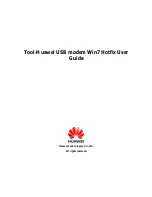
1022410 – 0001 Rev. 2
3–48 UMOD hardware theory of operation
The T1/E1 LIU uses either alternate mark inversion (AMI) or
B8ZS encoding for T1 signals and HDB3 encoding for E1 signals.
AMI encoding, shown in figure 3-28, is an analog representation
of non-return-to-zero (NRZ) digital data. The coding rules are:
•
Digital ones are converted into a series of voltage pulses of
alternating polarity.
•
Digital zeros are converted to no pulses (zero volts).
Figure 3-28
AMI encoding of digital data (NRZ)
DIGITAL DATA
1
0
1
0
1
1
0
0
1
0
0
0
NRZ
1
AMI
BI-POLAR VIOLATION
CLOCK
0
5
0
+
-
T1 data is encoded using the analog B8ZS, a version of the AMI
format. B8ZS coding does not allow more than eight successive
zeros to be transmitted since zeros are represented by the lack of
pulses. B8ZS substitutes a unique code that includes a
combination of ones, zeros, and deliberate bipolar violations as a
substitute for these zeros. This guarantees that a minimum pulse
density is present for accurate clock recovery.
E1 data is encoded using the analog HDB3, a version of the AMI
format. HDB3 coding does not allow more than three successive
zeros to be transmitted. In the same fashion as B8ZS encoding,
HDB3 substitutes a unique code as a substitute for these three
zeros, guaranteeing that a minimum pulse density will be present
for accurate clock recovery.
E2/T2 transmit operations.
T2 (balanced or unbalanced) or E2
(unbalanced) data enters the GIM from the SD port of the CIM
(see figure 3-27 on page 3–47). The signal is passed through a
transformer, then routed to the SD E2/T2 LIU. The LIU extracts
TT and TxD from the T2 (SD-A and SD-B for balanced, or SD-B
for unbalanced) or E2 (SD-B) signals. A PLL circuit locks onto
the T2 or E2 signal, the data is sampled, then clock signals and
data are passed through a jitter attenuator. Appropriate decoding
(HDB3, B6ZS, or B8ZS) is then performed. Clock and data
signals are then routed to the IFU or UMOD motherboard for
further processing.
















































